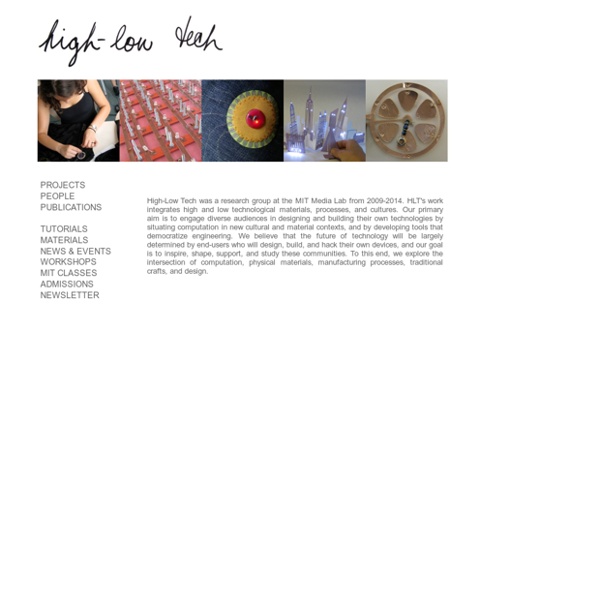



E-Textile Swatch Exchange YEAR OF INVENTION: 2017CREDITS: BeamDIMENSIONS: 150 x 110 mm With a rectangular piece of carbon non woven, a microcontroller ATtiny85, with two analog inputs and 4 LED’s a device can be made which indicates on which quadrangle of the carbon a droplet of water has been fallen. Over the rectangular piece of carbon non woven a voltage is applied. HOW TO GET WHAT YOU WANT Welcome to the KOBAKANT DIY Wearable Technology Documentation Workshops least likely scenario This workshop is part of a course at the Ernst Busch Hochschule in Berlin. It is only open to students in the departments of Spiel&&Objekt. Workshops
Using GitHub What's a Repo? Repo is short for repository. Think of a repo as a folder of files and all the changes made to the files are recorded. Code Monster from Crunchzilla <h2>Code Monster gets kids excited about programming. It is a combination of a game and tutorial where kids experiment with learning to code. <p> Code Monster use Javascript. Please enable Javascript if you want the play with the Code Monster. Otherwise, Code Monster will not be able to play with you. </p><p></h2>
DESIGN SQUAD NATION . Build Did you know? A Bristle Bot is a lot like a Pogo Stick. For example, you bounce up and down on a Pogo Stick. The pager motor does the same thing with the toothbrush head—it bounces it up and down. To move forward on a Pogo Stick, you tilt it forward while bouncing. Cardboard Chassis for Cheap Robots 1: Boxbot Previously I made an Instructable on cheap motors and wheels for robots, but wheels alone don't make a robot. If you want your robot to cruise in style, it's going to need a sturdy and stylish body. It's easy to make something rough but functional, but in my experience taking the time to make something look good usually makes it work better in the long run. A clean design makes it easier to add features, swap out parts, and generally keeps you from going nuts. That's why I'm not just focusing on the design of the body, but how it looks as well.
Motors and Wheels for Cheap Robots When I was little, and just getting started out with robotics, I had very little in the way of funds or patience for ordering robot kits online. Back then the selection was more limited than today and pretty much all the robotics kits were built for Windows users, which my family and I very much were not (and I was not as adept at finding things for myself online). Left to fend for myself, I had to get creative. You might even say I got "crafty". I used cardboard for my robot chassis, cardboard for my wheels... cardboard for pretty much everything, with bottle caps, duct tape, and other bits and bobs thrown in.
CSTA - Highlighted Resources Highlighted Resources Three New Videos from Code.org To help inspire kids to learn computer science, some of our greatest tech heroes have come together to record a short video message about how learning to code has influenced their lives and opened up doors. The message has received rave reviews in tests with students. For your convenience, Code.org has created 1-minute, 5-minute, and 9-minute versions. Please check them out. Robot recipes: durable metal robot toys made with the cans from last night’s dinner #ArtTuesday November 4, 2014 AT 12:00 am Via B.Light Design. Every Tuesday is Art Tuesday here at Adafruit! Today we celebrate artists and makers from around the world who are designing innovative and creative works using technology, science, electronics and more.